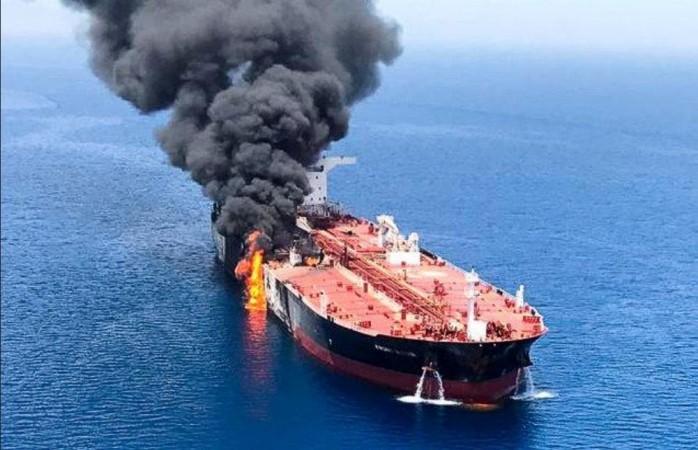
Despite US President Donald Trump's decision not to bomb Iran in spite of the downing of a US drone, the crude prices are steadily rising. The momentum of the upward swing of the Brent that has gained about 30 per cent since the beginning of 2019 may carry it towards $100 per barrel if there is no de-escalation in the Middle East. The continuing attacks on Saudi Arabian oil installations, airports, and tankers in the Gulf of Oman are keeping the region tense. Iran that lies to the north of the Strait of Hormuz has a chokehold on the passage through which about 21 per cent of the total global consumption of liquid petroleum products and 30 per cent of liquefied natural gas pass. Its vulnerability is exacerbated by the fact that it is as narrow as 30km at some points.
Brent hit a recent high of $64.97 on Friday and despite a slight pullback in early trade on Monday, it was expected to head up. The Indian basket hit $63.19, a rise of about 2.68 per cent. Petrol price in Bengaluru city rose to Rs 75.20 and diesel Rs 66.85 on Monday.
Prime Minister Narendra Modi and his newly installed Finance Minister Nirmala Siatharaman will have difficulty balancing the country's foreign currency reserves with runaway oil prices, experts say. India meets 80 per cent of its petroleum requirements from imports.
Market observers say that in the global demand-supply perspective, the market is currently in a deficit of 0.75 million barrels per day (mbpd) and the deficit could continue into the third quarter of 2019 as Organization of Petroleum Exporting Countries (Opec) has announced its decision to stick with oil production curbs.

Iran-aligned Houthi rebels who control large swathes of Yemen have been launching bothersome attacks on Saudi oil assets on Peninsular Saudi Arabia and the tankers passing through the Gulf of Oman. The rebels continue to hit Saudi oil installations, airports and oil tankers. The long drawn-out Saudi war on Houthis backed by the United Arab Emirates (UAE) have not nipped off the rebel ability to mount attacks inside the Kingdom.
Brent had lost some gains it made early in the years when the tensions began to escalate after President Trump announced the decision to impose the terms of the sanctions against Iran more strictly. This meant that a clutch of countries like China, India, South Korea, and Turkey that enjoyed an exemption on buying Iranian oil was asked to discontinue all oil trade from May 2. Brent's year-to-date rise had then hit 33 percent.
A sustained increase in the crude price will hit India that meets nearly 80 per cent of its fuel demand through imports. Shipping rates have been skyrocketing with each attack on oil tankers, the Oil and Gas magazine has said. The attacks started with strikes on four Saudi oil tankers berthed at the UAE port in Fujairah on May 12. A BBC report in June said an inquiry into the attacks stopped short of directly blaming Teheran. Bimco, the world's largest international shipping association, wrote to its members that the uptick in costs came from added safety measures and the higher insurance premiums.
Oxford economists John Payne and Gabriel Sterne said in a report last month that there was a significant risk of higher oil prices. "We see increased risks of significantly higher oil prices," they said in a report. "In the short-run, it is likely the supply impact will be offset by higher production elsewhere, but the market is tightening and all it would take is one more shock to supply and oil could reach $100," the note said.














